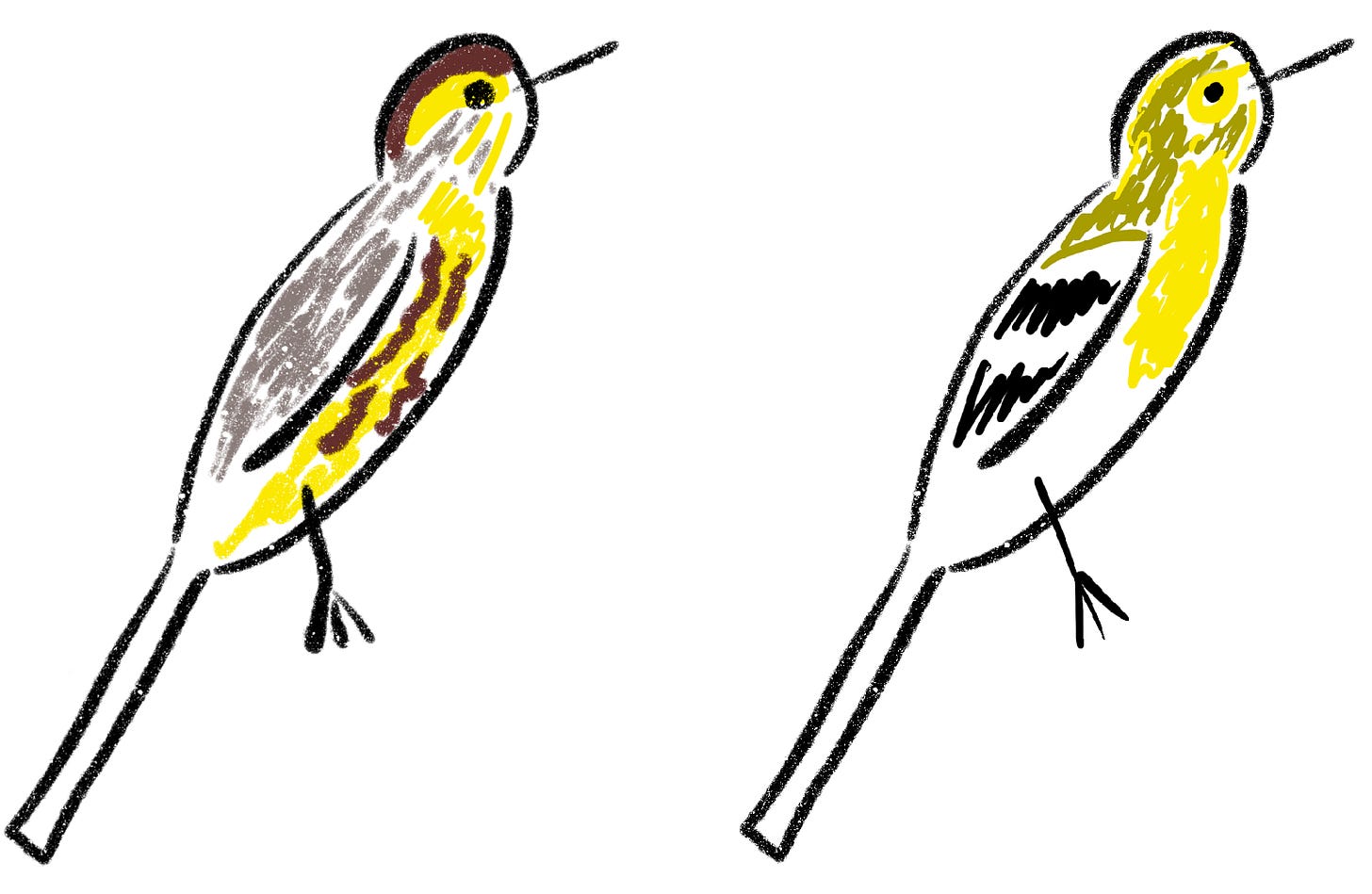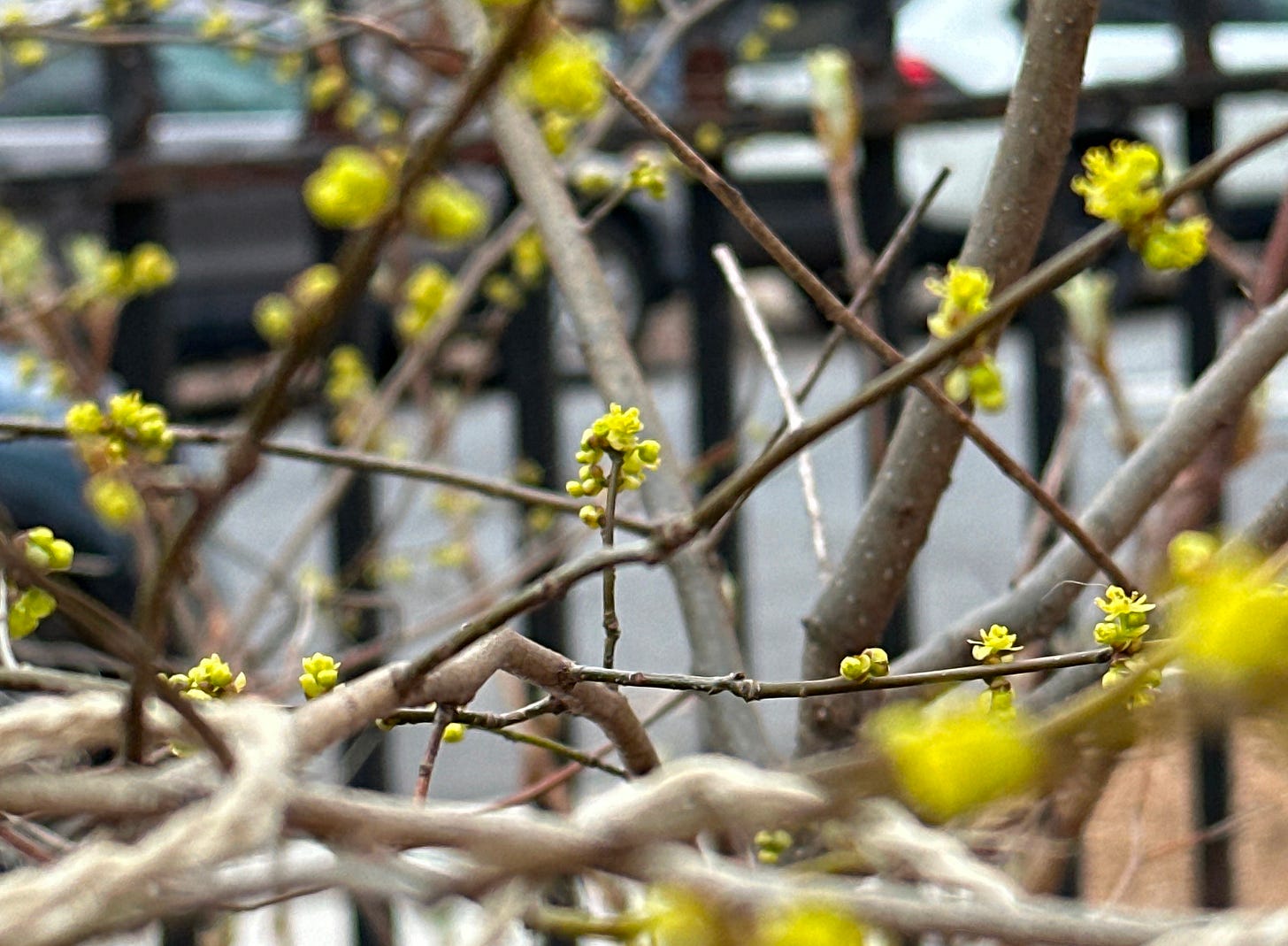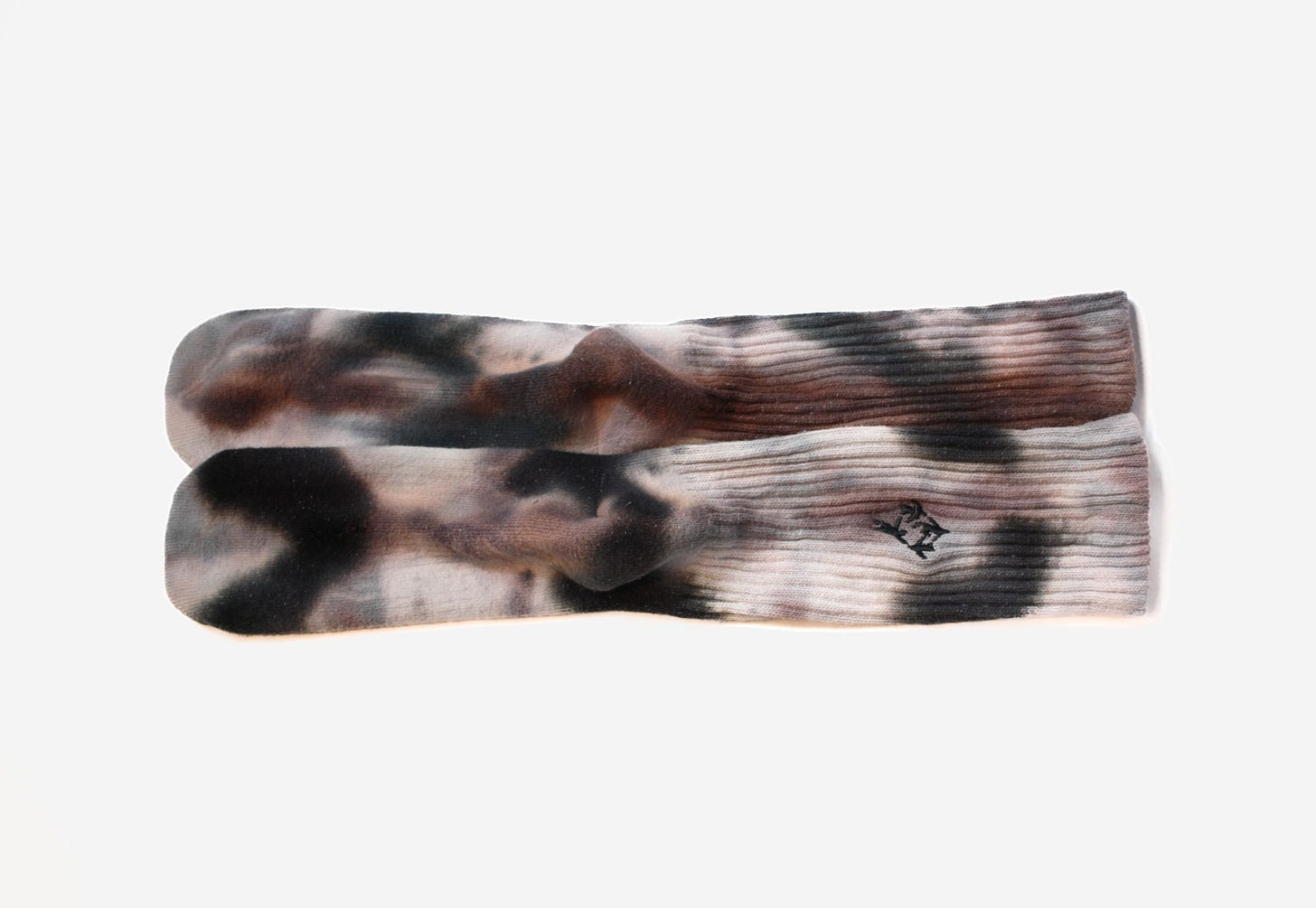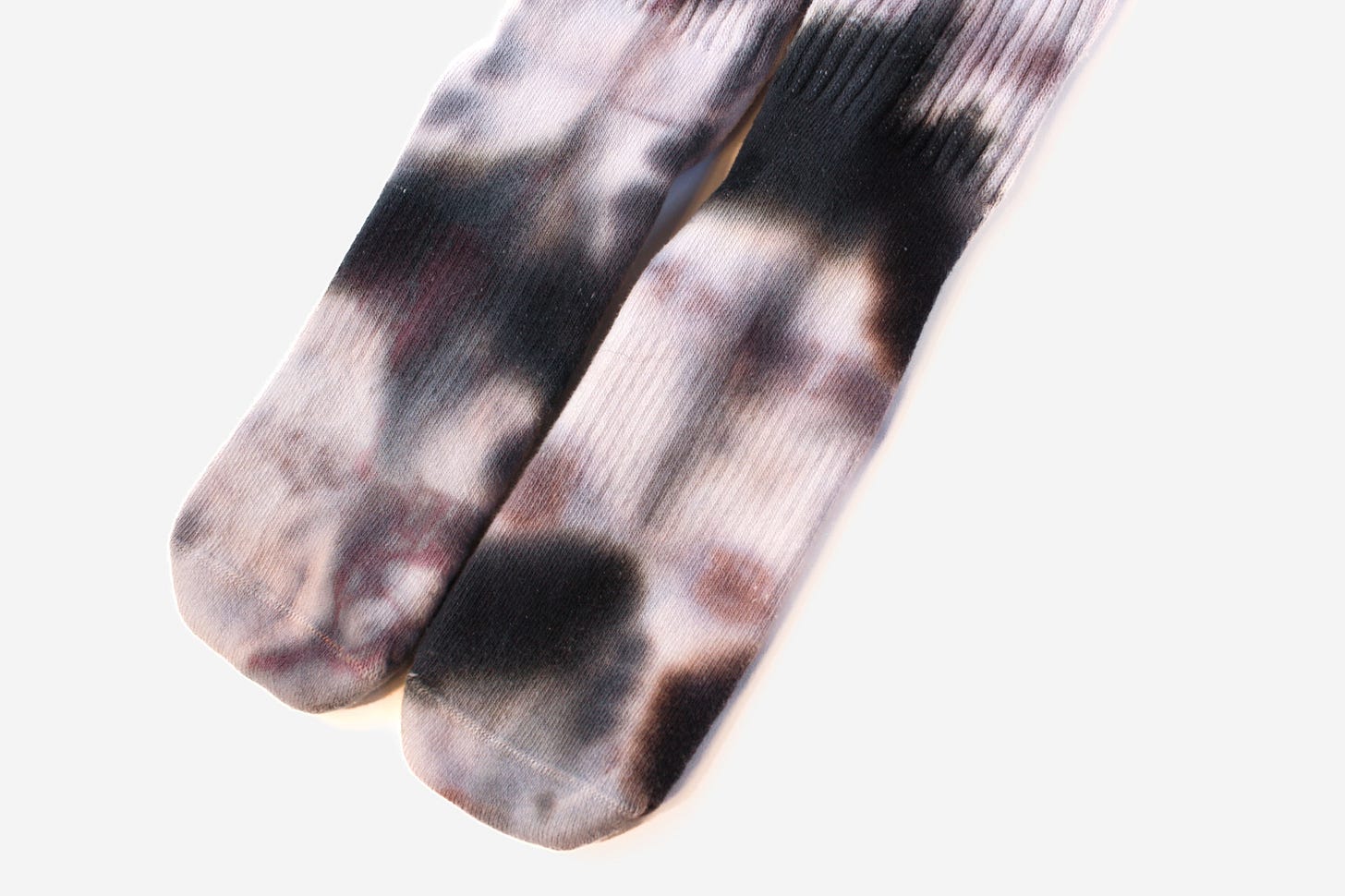MICROSEASON — MAR 24 - APR 6
A Gift for Members (!) Kinglets (!!) Spring Migration Begins (!!!)
Constellations, ancient and steady, map the route before the first wings beat against warming air. Spring tilts the Earth forward, and the great wheel of stars whispers its command: north. Humans, mesmerized by screens, miss it, but birds—hearts attuned to forces older than memory—take notice.
From an equatorial hush, they rise like exhaled breath, waves of beings spilling up into night sky. Warblers, weightless as thoughts, fight through corridors of wind. Shorebirds press against the curve of the Earth, tireless, following magnetic veins invisible to all but them. Swallows stitch twilight to dawn.
Above, the moon—mottled and watchful—glows softly on a billion unseen flights. Beneath, a restless land pulses with anticipation. Flowers bloom, insects unfurl their wings, and trees stretch their budding fingers skyward, ready to receive.
This is a pilgrimage written in light and dark, gravity and hunger—a choreography of survival performed without audience or applause.
And yet, look—step outside on a damp morning, turn your eyes to flora, watch for unfamiliar movements, strange shapes, the flash of tropics-borne plumage. Listen—walk alone, tilt your ear toward foreign buzzes, alien songs, even the hush between wind gusts.
Give your attention—notice. The birds will tell you a celestial story of life sweeping ever northward.
Happy Spring Migration.
—TNM
(Welcome back—we’re very glad to see you.)
UPDATES & ANNOUNCEMENTS
Spring is here, and Nocs Provisions is flying another 30% discount our way! Consider this your long-awaited sign from the universe—it’s time to get in the game with a good pair of starter binoculars like their Field or Pro Issues. DM us your wish list (no limits on product or quantity) within the next 24 hours—aka by tomorrow night. Don’t wait!
Dear paying members of The Noticer’s Monthly—THANK YOU for keeping this cloacal bird project aloft. In your honor (nay, as your elemental right), we bestow upon thee… Cooper’s Hawk Socks.
COOPER’S SAWKS.
As Cooper’s Hawks become ever so slightly less noticeable in Brooklyn this time of year, we want to make sure you to stay in touch with your winter killer instinct.
We teamed up with esteemed textile artist Jessi Highet to make that happen. She rips—like a Cooper’s Hawk tearing into a pigeon rips. (Plus, like, talent-wise, too.)
I’m a current paid sub! How do I get my Socks?
You’ll soon receive an email with instructions!
I’m NOT a current paid sub! I have cozy foot FOMO!
Consider subscribing to the ~$4/month paid tier. For the measly price of a coffee a month, you’ll unlock future fashion freebies, invites to members-only events, full access to our educational archive, and perks we haven’t yet dreamed up.
Most importantly, you’ll help keep McGolrick Bird Club—and this digital digest—navigating the skies.
Ever-orbiting thanks!
MICRO-SEASON: MAR 24 - APR 6
“Q2” is an artless invention, cooked up by diabolical MBA grads in a windowless conference room. (No offense, biz school survivors.) Immolate the ideas of corporate time like you would a Tesla dealership. Then, bask in the warm, smoldering remains: micro-seasons!
Micro-seasons are the everyday proofs of a great cosmic dance between Earth, our breathing, blooming Mother, and Sun, the eternal muse to whom she currently bows.
This micro-season, in McGolrick Park, our proxy for NYC and perhaps even larger swathes of the eastern U.S., one noticed:

Palm and Pine warblers, Golden-crowned Kinglets, Eastern Phoebes, Chipping Sparrows, and Hermit Thrushes · Bumblebees appear · Migrating sparrows · Forsythia & Northern Spicebush flowers · Cherry and Red Maple and Magnolia blossoms · American Hornbeams sprout catkins
And here’s a full list of McGolrick birds:
Palm Warbler · Pine Warbler · Eastern Phoebe · Golden-crowned Kinglet · Hermit Thrush · American Goldfinch · Brown Creeper · American Kestrel · Dark-eyed Junco · White-throated Sparrow · Song Sparrow · Swamp Sparrow · Chipping Sparrow · Tufted Titmouse · Black-capped Chickadee · White-breasted Nuthatch · Red-tailed Hawk · Cooper’s Hawk · Common Grackle · Downy Woodpecker · Red-bellied Woodpecker · Northern Flicker · Yellow-bellied Sapsucker · Northern Cardinal · Blue Jay · Fish Crow · American Crow · Common Raven · Turkey Vulture (flyover) · Osprey (flyover) · Double-crested Cormorant (flyover) · Canada Goose (flyover) · Plus the virtually always present in urban parks: Rock Pigeon, European Starling, American Robin, House Sparrow and Mourning Dove
Nota bene: The birds listed above are from the entire micro-season, not just our Saturday outings!
Current Japanese micro-season: First cherry blossoms & Distant thunder
If you encounter a bird looking unwell on human turf like sidewalk, bad news: it bumped into a building while migrating. Good news: you’re now the proud parent of a magical creature. (Congratulations!) Now, do this: - Usher your stunned baby into a cardboard box, somewhere they can rest safely - Transport your baby to the Wild Bird Fund - Write @nyccouncil about passing legislation that makes New York City safer for birds - Support bird advocacy alongside groups like @lightsoutnys
If you encounter a dead bird, log it at dbird.org
MICRO-LESSON: KINGLETS
Kinglets!
These tiny birds are showing up with increasing frequency in New York City. Kinglets are tiny—among the smallest birds in North America. They often flit around in little flocks. And the best part? There are only two species to learn! Both species:
are smaller than warblers*
have mostly gray plumage with faint yellow-olive hints
can be found across much of North America (range maps below)
sport very bright white wing bars

As for the differences between the two species:
Ruby-crowned Kinglets are easiest to identify by their large, black eyes framed in white—think anime eyes. Watch for movement similar to hummingbirds, where they dart and briefly hover on rapid wingbeats. Listen for a series of sharp "chips" that sound like someone pecking at a typewriter.
The above photo may have you asking: WHERE’S THE CROWN? Rubies’ hairdos are actually retractable, and only show when the bird is aggravated or, like, horny. It’s a seriously wonderful ruby-red mohawk:
Golden-crowned Kinglets are always colorfully capped. Bright yellow or orange streaks, framed in black, sit above white facial markings that give them sleek, jet-black eyes. Listen for their soft, high-pitched, mouse-like chatter.
That’s it for kinglets! You’re done! Good job!
Extra Credit: How are kinglets different from warblers?
For one, recent research shows that kinglets are genetically distinct from warblers, despite some superficial and size similarities. Two, kinglets don’t get quite as neo-tropical as warblers—they’re truly North American birds. Check out their range maps:
















